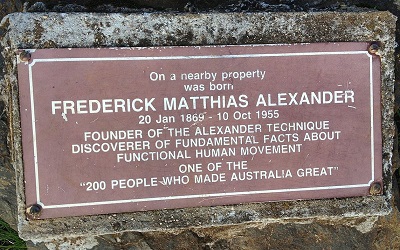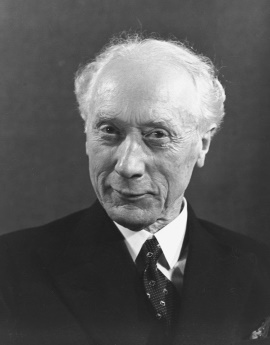The Alexander Technique was developed by Frederick Matthias Alexander (1869 -1955). It is a practical method of self-help which you can use for your health and wellbeing throughout life.
Learning and applying the Alexander Technique can complement mainstream medical approaches and can:
- Help prevent and alleviate conditions associated with stress tension and poor posture
- Reduce muscle, joint and back pains
- Aid rehabilitation after illness, injury or surgery
- Provide coping skills for chronic conditions
Traditionally, Alexander lessons are taught in face-to-face lessons with hands-on contact and directions. More recently, with the onset of the COVID-19 pandemic, online lessons have become available.
About F. M. Alexander
F.M. Alexander, Aphorisms
F. M. Alexander was an actor who had vocal problems, which interfered with his work. As a result, he spent several years researching how and why this happened. He observed himself in mirrors and discovered he habitually tensed his neck in reaction to situations. This resulted in his hoarse voice.
Alexander realised these vocal problems were related to a generalised ‘misuse’ of his whole body and thought patterns. When Alexander taught himself to ‘inhibit’, to stop these habitual reactions, his vocal problems ceased and he found an improvement in the functioning of his whole body. He observed similar reaction patterns of tension in most adults, whereas many children had a free and easy poise and use of themselves. Alexander realised that we tend to lose the freedom of movement we had as children, largely because we develop unhelpful habits that interfere with the natural way our bodies wish to move.
Benefits of the Alexander Technique
F.M. Alexander, Aphorisms
FM gradually believed that the relationship and use of our head, neck and back acts as the ‘primary control’ of our whole body. Most children move freely and fluidly but because we ‘translate everything, whether physical or mental or spiritual, into muscular tension’ we gradually develop unconscious habits of misuse. These habits interfere with the fine tuning of the body’s primary control, resulting in a general loss of poise and vitality, plus disorders such as backache, repetitive strain injury (RSI) and headaches.
Alexander’s first pupils began to report that not only were vocal problems improving but other aches and pains were also vanishing, so Alexander began to develop the Technique that we know now, for the whole body-mind organism. He referred to his work as being ‘psychophysical re-education’. These days, many people also think of it as being mindful movement.
The list below represents just some of the famous people who are happy to acknowledge that they have learned the Alexander Technique. It also illustrates a few of the activities to which the Alexander Technique may be applied, beyond the usual problems such as back pain and RSI. Ideally, the Technique becomes a way of life, so that everything we do is enhanced because of it.
| Aldous Huxley | Writing and Eyesight – See: ‘Ends and Means’; ‘Eyeless in Gaza’ | |
| Sir Colin Davis | Conducting | |
| Julie Andrews | Acting, Singing and Dancing | |
| Sting | Singing, Guitar | |
| Madonna | Singing, Dancing | |
| Yehudi Menuhin | Violin, Conducting | |
| John Cleese | Acting, ‘Funny Walks’… | |
| James Galway | Flute | |
| Sinead Cusack | Acting, Pregnancy and Childbirth – | |
| Jeremy Irons | See: ‘The Alexander Technique Birth Book’ – Ilana Machover, A & J Drake, Sinead Cusack & Jeremy Irons | |
| William Hurt | Tension and Stage Fright – See: ‘The Alexander Technique’ DVD – Jane Kosminski and Deborah Caplan | |
| Judy Dench | ||
| Sir Lenny Henry | Voice work and Performance Anxiety. See ‘Touching Lives’ – Sue Laurie | |
| Alan Rickman | Acting – See ‘Touching Lives’ Sue Laurie |
Teacher Training
Alexander started his first teacher training course in London in February 1931. After his death in 1955, some teachers he’d trained got together and formed the Society of Teachers of the Alexander Technique, STAT (1956) in order to maintain a high professional standard of teaching and training. STAT, which is the oldest and biggest of the affiliated Alexander Technique professional societies, developed the criteria and rigorous standards by which their recognised teacher training courses are now run. STAT also promotes research into the Alexander Technique. These days there are many STAT recognised teacher training courses in the UK and throughout the world. You can see an overview of international Alexander Technique activities here. This website also offers a number of useful resources.
Hilary has been teaching at an Alexander teacher training course, LCATT, the London Centre for Alexander Teaching and Training, since 2009.
Worldwide Recognition for the Alexander Technique
Alexander’s work is respected worldwide. In Australia, where Alexander was born, he has been voted as one of the top 200 Australians who made Australia great!

